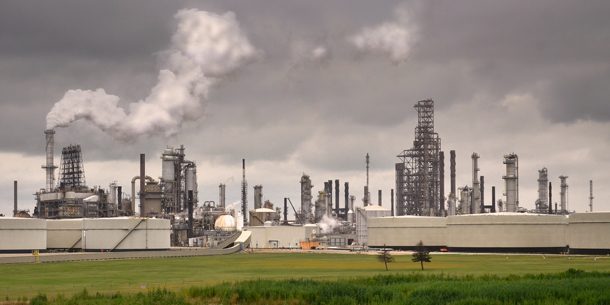29
Mar
Producers Warned by EPA that PFAS Is Contaminating Pesticides and Food

(Beyond Pesticides, March 29, 2022) Plastic storage barrels contaminated with polyfluoroalkyl substances (PFAS) may be in violation of the Toxic Substances Control Act (TSCA), according to an open letter released by the U.S. Environmental Protection Agency (EPA) last month. Manufacturers, producers, processors, distributors, users, and those that dispose of fluorinated High-Density Polyethylene (HDPE) containers or other similar plastics that form PFAS as a byproduct were notified in the letter of requirements under federal law. The notice comes two years after EPA was first alerted to the presence of PFAS in a mosquito pesticide used by the state of Massachusetts known as Anvil 10+10. “Today’s action will help ensure that responsible parties are held accountable for any future PFAS contamination affecting communities,” said Assistant Administrator for the Office of Chemical Safety and Pollution Prevention Michal Freedhoff, PhD.
While the agency believes its letter represents progress, health advocates note that there has been no meaningful regulatory action from the agency on this issue. In January 2021, a year after receiving notice from Public Employees for Environmental Responsibility (PEER) on the presence of PFAS on Anvil 10+10, EPA confirmed the finding. At the time the agency did nothing, while acknowledging, “the need to provide guidance…” Even with the specific confirmation, EPA merely encouraged states with Anvil 10+10 stocks to “red tag that inventory and hold for now.”
EPA’s latest actions indicate that these barrels may violate TSCA, but provide a possible roadmap for manufacturers to achieve compliance. The agency indicates that its long-chain perfluoroalkyl carboxylate (LCPFAC) Significant New Use Rule (SNUR), released in 2020, does not provide an exemption for PFAS produced as a byproduct of plastic manufacturing. EPA indicates, “This means that the uses require notice to EPA via a Significant New Use Notice (SNUN), EPA review of potential risks of this use under TSCA section 5, and a determination of whether (and under what conditions) such uses can continue.”
In August 2021, federal agencies acknowledged that the plastic HDPE storage barrels contaminating pesticides may also be used to store food products. The U.S. Food and Drug Administration (FDA) sent a letter to plastic manufacturers warning them to stop fluorinating packaging after it has been molded or in the presence of water. It indicated that only certain gasses—fluorine and nitrogen—could be used during the fluorination process, and others like argon and oxygen could attach to carbon atoms and form PFAS.
While both EPA and FDA appear to be strongly discouraging companies from continuing manufacturing processes that create PFAS contamination, the agency’s action has effectively no teeth as these contaminated products remain on the market. Federal agencies instead have continued along their post-cautionary approach to regulating, as Assistant Administrator Freedhoff noted, their effort is to have “responsible parties…held accountable for any future PFAS contamination affecting communities.” Health advocates note that it is not helpful to have a mechanism for recourse in the future when the contamination and poisoning is occurring today.
It is evident that EPA and other federal regulators have been well behind the curve on the dangers posed by PFAS compounds. Despite evidence on the dangers of PFAS stretching as far back as the 1950s, federal agencies sat by the sidelines as the plastics industry continued adding the material to new products. A study published in 2020 in Environmental Science: Processes and Impacts identified PFAS is hundreds of common products Americans are exposed to daily. “In addition to well-known categories such as textile impregnation, fire-fighting foam, and electroplating, the identified use categories also include many categories not described in the scientific literature, including PFAS in ammunition, climbing ropes, guitar strings, artificial turf, and soil remediation.” Downstream from these consumer uses, PFAS has made its way into our environment and our bodies. It has been found to be widespread in farm fields due to its presence sewage sludge, and has contaminated water bodies throughout the U.S.. After a three year legal effort by PEER, EPA publicly released data on the range of sources and concentrations of PFAS in our environment, with PEER providing a startling interactive map with the data available for review.
These myriad sources of exposure have important implications for our health. A study conducted by the U.S. Centers for Disease Control and Prevention determined that 98% of Americans have some level of PFAS in their blood stream. With health risks including developmental, metabolic, cardiovascular, and reproductive harm, cancer, damage to the liver, kidneys and respiratory system, as well as the potential to increase the chance of covid infection and severity, PFAS presents a chronic danger to Americans that demands immediate regulatory action.
In light of EPA’s insufficient response, at least 32 states are considering 210 potential laws to restrict PFAS in some way. Advocates are encouraged to contact their elected representatives and urge them to take meaningful action to eliminate sources of PFAS in food, farming, and our environment. For more information, see Beyond Pesticides’ previous articles on PFAS contamination in our Daily News Blog.
All unattributed positions and opinions in this piece are those of Beyond Pesticides.
Source: EPA press release, E&E news
Photo credit: Richard Hurd










